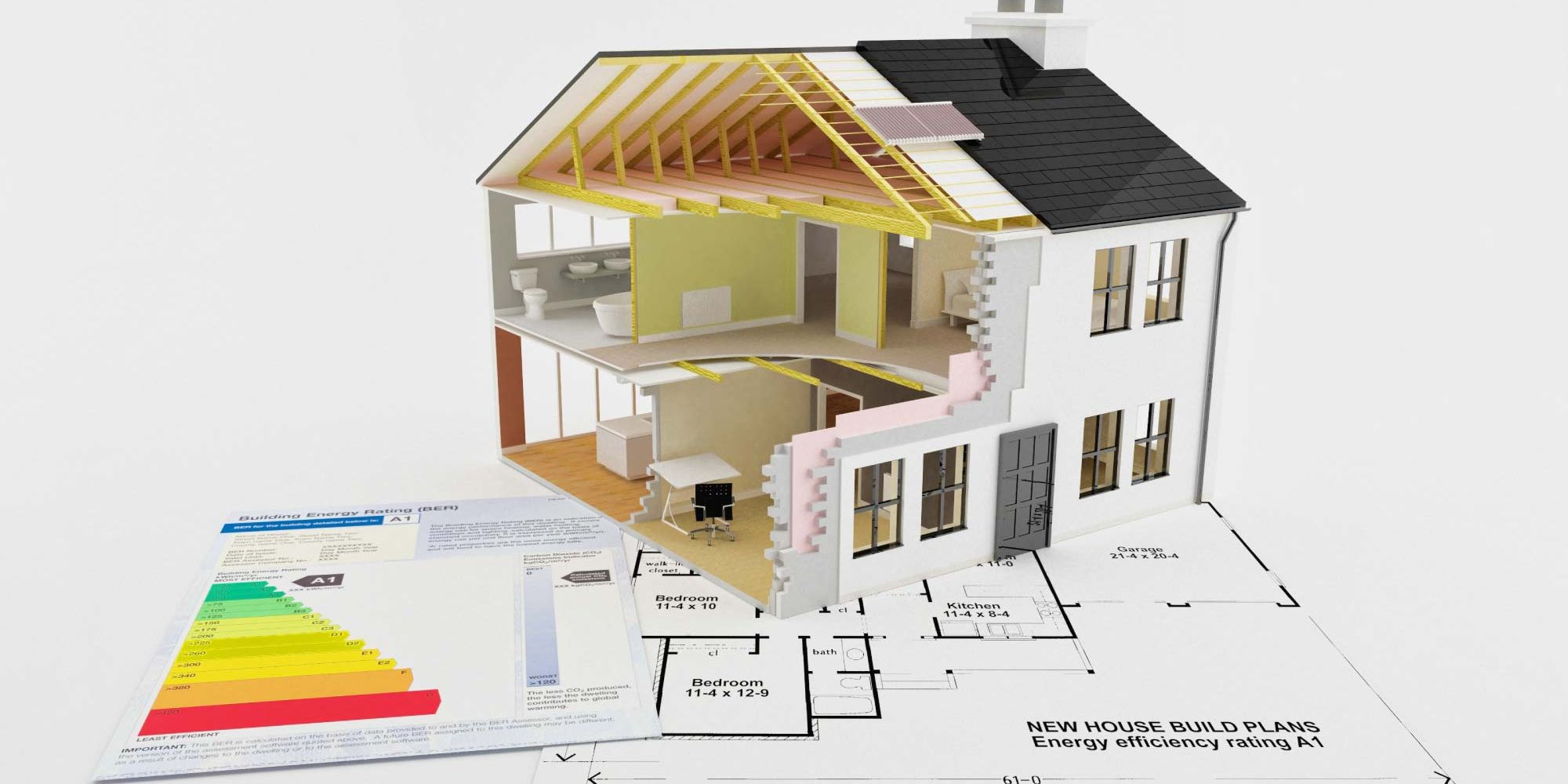30 Oct 2020
Energy efficiency is a big concern nowadays, and you can’t know for sure exactly how well your home performs unless it’s been subjected to testing. Energy efficiency isn’t something you can just decide upon pursuing after your home has been built, either; you’ve got to begin your design and specifications with it in mind.
What is an SAP Test?
Essentially, SAPs (short for Standard Assessment Procedure) are energy calculations. Every new home must meet the parameters of SAPs at both the design and construction stages. The former stage has to demonstrate that the new dwelling will meet Building Regulations, and the latter has to prove that the finished dwelling does meet the requirements. This process will also throw up any inconsistencies between what was expected to happen at the design stage and what actually happened once construction finished. The two criteria that determine the performance are:
- Amount of CO2 that the dwelling is responsible for (measured in CO2 / m2 of floor space / annum)
- Fabric energy efficiency (kWh/m2/year), defined by space heating and cooling requirements and influenced by heat losses through fabric, ventilation rate, thermal bridging, airtightness, etc.
The figures are measured against a target (known as a ‘notional building’) of the same dimensions as the dwelling concerned, based on a set of minimum performance standards for various aspects of the dwelling. The Building Regulations pass is achieved when both the CO2 and fabric energy efficiency measurements are equal to, or lower than, the targets. In some cases, planning permissions may contain conditions that require standards exceeding Building Regulations. In such cases, a design SAP calculation may be necessary prior to its submission to building control.
How Can I Meet the Requirements?
One of the most important factors in this is considering how your new home will provide heating and hot water. For many people, mains gas will be the obvious option, but if your new home will be in an unfamiliar or particularly rural/remote area, it’s worth checking out the availability of services. Make sure you let your regional business manager know so this information can be passed to the design team. Once you’ve received your design SAP calculation, take time to check that this information has been understood and applied.
If mains gas is not available, or the cost to bring it to your site is prohibitive, you’ll need to consider alternatives. Ground- and air-source heat pumps, or more traditional self-contained systems like LPG or fuel oil, are common. Bear in mind that the latter are penalised for being particularly carbon-intensive options. This will mean performance must be significantly improved elsewhere in the build to mitigate their effects and compensate for the shortfall. These improvements could take the form of a particularly low air permeability value, or low- and zero-carbon technologies like solar-thermal panels (augmenting hot-water provision), or a photovoltaic array (generating onsite electricity).
An increasing number of people are specifying whole-house mechanical ventilation systems, in particular, mechanical ventilation and heat recovery (MVHR) systems. The holistic approach to ventilation that MVHRs facilitate harbour a number of benefits. The conditions that can promote growth of mould in extremely airtight dwellings will not occur, because the warmth and moisture generated by both occupants and house activities are expelled at controlled rates. In the process, they are passed through a heat exchanger which transfers some of that otherwise-wasted energy into the incoming fresh, dry air. The inclusion of such systems requires an integrated approach – locating the ducting and ensuring provision is made for its route to avoid any structural obstacles (or, where these cannot be avoided, ensuring that suitable openings are provided in any deep structural steelwork).
Such systems are also operational 24 hours a day, so their electricity use could be significant (thereby affecting the CO2 emissions aspect of the SAP calculation) without highly efficient motors and, importantly, a low air permeability rate attributed to the dwelling itself.
Reducing the uncontrolled air leakage to an absolute minimum, so the warm air contained within the dwelling doesn’t leak out through other, unwanted routes. This optimum rate is around 3.0 m3/m2 hr @ 50pa, and is determined by client-approved contractors conducting onsite testing once the build is completed.
The Fabric-First Solution
We think that the best route to Building Regulations compliance is to consider the optimum building fabric for your build (one that features heat-loss elements for walls, floors, etc.) before you think about any enhanced (and more costly) technical options. This will also render your new home future proofed, establishing a base from which the benefits of any subsequent upgrades can be maximised.





